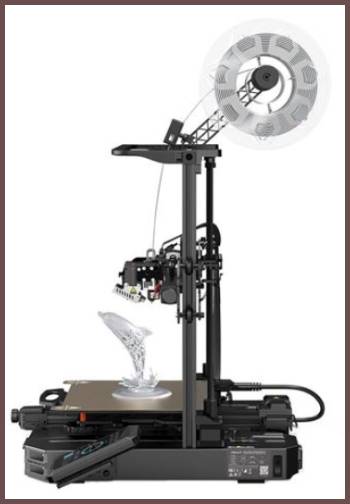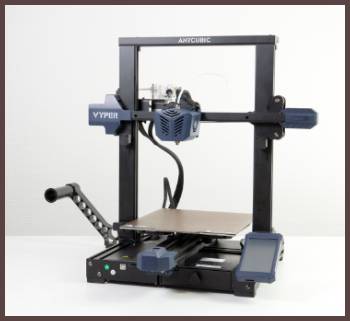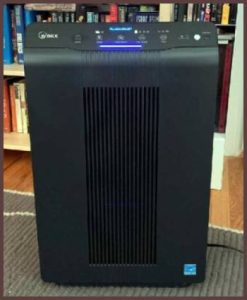When it comes to 3D printing, enthusiasts often find themselves torn between two giants in the industry – the Ender 3 S1 Pro and the Anycubic Vyper. Both printers have their unique strengths and potential drawbacks, and the choice often boils down to personal preferences and printing requirements.
In this article, we’ll delve into the details of these two powerful machines and, hopefully, make your decision a tad bit easier.
A Brief Comparison Table
| Feature | Ender 3 S1 Pro | Anycubic Vyper |
| Auto-Leveling | No | Yes |
| Print Speed | Slower | Faster |
| Noise Level | Low (Silent Motherboard) | Low (Silent Printing) |
| Dual Z-Axis | Yes | No |
| Filament Run-Out Sensor | Yes | No |
| User Interface | Touchscreen | Touchscreen |
| Hotbed | Faster heating | Standard |
| Stability | High (due to dual Z-axis) | Standard |
| Bed Leveling | Can be challenging | Simplified due to Auto-Leveling, but can have inconsistencies |
Ender 3 S1 Pro: The Pros

The Ender 3 S1 Pro is an upgrade from its predecessor, the Ender 3 V2, which was already an impressive machine. This model takes it a notch higher, boasting an enhanced stability, courtesy of its dual Z-axis. The improved design eliminates the risk of one side being lower than the other, making for flawless printing results.
One of the standout features of the Ender 3 S1 Pro is its Silent Motherboard. This feature ensures the printer operates at minimal noise levels, so you don’t have to worry about disturbing the peace while you create your masterpieces.
Further, the S1 Pro comes with an intuitive touch screen interface that enhances the user experience. And let’s not forget its improved hotbed that heats up quickly, saving you precious time.
Ender 3 S1 Pro: The Cons
Despite its impressive features, the Ender 3 S1 Pro is not without its drawbacks. For starters, some users have reported difficulty in leveling the bed, which can significantly affect the quality of prints.
Moreover, while the printer offers high-quality prints, the print speed can be on the slower side. If you’re seeking fast production, this might not be the perfect choice for you.
Read More: About MEZE 109 Pro And Focal Clear
Anycubic Vyper: The Pros

Moving on to the Anycubic Vyper, this printer has been making waves in the 3D printing world for its high-quality prints and advanced features.
The Vyper’s claim to fame lies in its Auto-Leveling feature. The device uses a sensor to measure the distance between the nozzle and the bed, automatically adjusting the level for optimal printing. This feature significantly reduces the time and effort needed to set up each print.
Another distinguishing feature of the Anycubic Vyper is its speed. The Vyper employs a higher quality stepper motor driver, which enables faster printing without compromising on the quality of prints.
The printer is also lauded for its Silent Printing feature, which ensures minimal noise during operation. Like the Ender 3 S1 Pro, the Vyper is user-friendly, featuring an easy-to-use touchscreen interface.
Anycubic Vyper: The Cons
Despite the Anycubic Vyper’s impressive specifications, it’s not without its downsides. First, the Vyper lacks a filament run-out sensor, a valuable feature for those long prints.
Additionally, while the auto-leveling feature is a significant advantage, it’s not perfect. Some users have reported inconsistencies, leading to occasional print failures.
Ender 3 S1 Pro vs. Anycubic Vyper: The Verdict
Both the Ender 3 S1 Pro and the Anycubic Vyper come with their unique set of pros and cons. Your choice will ultimately depend on your specific needs and preferences. The Ender 3 S1 Pro offers excellent stability, a silent motherboard, and an intuitive touch screen interface. However, bed leveling and print speed can be challenges.
On the other hand, the Anycubic Vyper offers auto-leveling, fast printing, silent operation, and user-friendly navigation. However, it lacks a filament run-out sensor and has reported leveling inconsistencies.
Read More: About MyPlasm CNC Problems And Solutions
Frequently Asked Questions (FAQs)
Yes, the Ender 3 S1 Pro is beginner-friendly. It comes with an intuitive touch screen interface that simplifies the user experience.
Indeed, the Anycubic Vyper features silent printing, ensuring minimal noise during operation.
While the Ender 3 S1 Pro delivers high-quality prints, its print speed is comparatively slower than some other printers in the same category.
No, the Anycubic Vyper does not come with a filament run-out sensor. This absence can be a drawback for long prints.
The Anycubic Vyper uses a sensor to measure the distance between the nozzle and the bed, automatically adjusting the level for optimal printing.
The dual Z-axis in the Ender 3 S1 Pro enhances stability, eliminating the risk of one side being lower than the other and ensuring flawless printing results.
Wrapping Things Up
In conclusion, whether you opt for the Ender 3 S1 Pro or the Anycubic Vyper, both are robust machines capable of producing high-quality prints. They each have unique features that cater to different user needs. Ultimately, your choice will depend on your specific requirements and preferences.
Happy printing!



